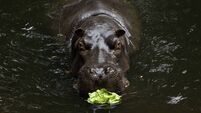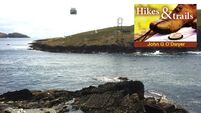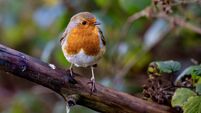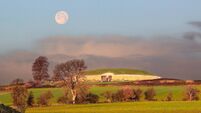The road to Cop15: Humans v nature — our long and destructive journey to the age of extinction
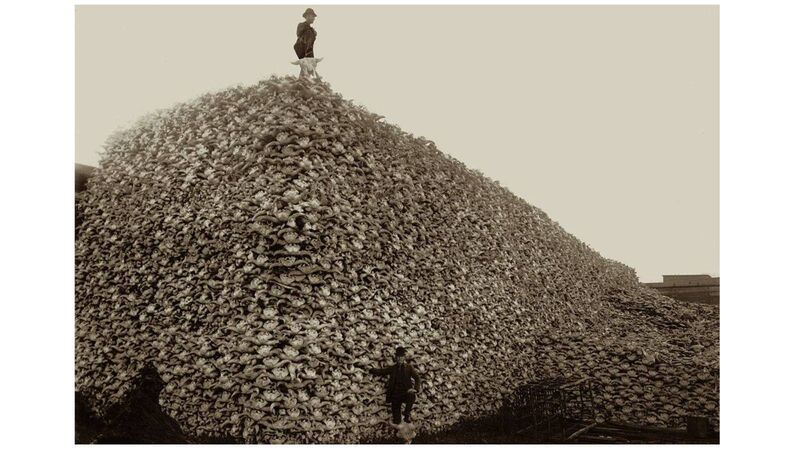
Photograph from the mid-1870s of a pile of American bison skulls waiting to be ground for fertilizer. Wiki Commons/ Burton Historical Collection/Detroit Public Library. Public domain for pre-1923 works
The story of the biodiversity crisis starts with a cold-case murder mystery that is tens of thousands of years old. When humans started spreading across the globe they discovered a world full of huge, mythical-sounding mammals called 'megafauna', but by the end of the Pleistocene, one by one, these large animals had disappeared. There is no smoking gun and evidence from ancient crime scenes is — unsurprisingly — patchy. But what investigators have learned suggests a prime suspect: humans.
Take the case of Genyornis, one of the world’s heaviest birds, which was more than 2 metres tall and weighed in excess of 200kg. It lived in Australia until, along with many other megafauna, it went extinct 50,000 years ago. In North America, giant beavers weighing the same as a fridge and an armadillo-like creature called a glyptodon, which was the size of a small car, existed until about 12,000 years ago, when they, too, went extinct. In all, more than 178 species of the world’s largest mammals are estimated to have been driven to extinction between 52,000 and 9,000 BC.

For a long time, these extinctions were thought to be linked to natural changes in the environment — until 1966, when palaeontologist Paul S Martin put forward his controversial “overkill hypothesis” that humans were responsible for the extinctions of megafauna, destroying the romantic vision of early humans living in harmony with nature.
Prof Mark Maslin, from University College London (UCL), suggests that the unsustainable hunting of megafauna may have been one of the driving forces that led humans to domesticate plants and animals. People started farming in at least 14 different places, independently of each other, from about 10,500 years ago. “Weirdly enough, I think the first biodiversity crisis was at the end of the last ice age, when early humans had slaughtered the megafauna and therefore they’d sort of run out of food, and that precipitated, in many places, a switch to agriculture,” he says.
Although the debate is far from settled, it appears ancient humans took thousands of years to wipe out species in a way modern humans would do in decades. Fast forward to today and we are not just killing megafauna but destroying whole landscapes, often in just a few years. Farming is the primary driver of destruction and, of all mammals on Earth, 96% are either livestock or humans. The UN estimates as many as one million plant and animal species are at risk of extinction.

WHAT IS...
Biodiversity
...Read more
After the spread of farming and significant population increases, it was European expansion that would be the next big blow to the planet’s biodiversity. While Indigenous peoples across the world lived mostly within the limits set by nature, recognising their dependency on it and protecting it, while hunting to survive, all that was about to change.
Spanish explorers and settlers arrived in central and southern America in the 15th and 16th centuries. In , Maslin and Prof Simon Lewis, also from UCL, describe maps of that time showing large tracts of lands with not much on them. These places already had names, but the Europeans claimed them for themselves. “Religion and notions of the superiority of Europeans loomed large as justifiers of both the conquest of land and the names themselves. The heyday of geologists naming vast portions of Earth’s history was also the European colonial era,” they write.
Their arrival also heralded the displacement, persecution and killing of Indigenous peoples. Researchers from UCL, including Maslin and Lewis, found the European colonisation of the Americas caused the death of 56 million people by 1600 — 90% of the Indigenous population. Today, Indigenous people make up just 6% of the world’s population but protect 80% of the planet’s biodiversity.
European scientists’ interest in the diversity of life peaked in the Victorian era. Great natural history museums are testament to this excitement of discovery — they wanted to show off the exotic animals and plants collected from all over the British empire to the public at home. For the first time, they began to understand the immense diversity of the natural world and that humans were destroying it.

The 18th century was when people realised humans were having big local impacts on the climate and environment. In 1778, the French naturalist Georges-Louis Leclerc noted the decimation of fish populations and destruction of forests, warning that humans “use everything up without renewing anything”, according to one account in , by Rachelle Adam.
At the end of the century, the explorer Alexander von Humboldt was on the loose. He was writing at a time when nature was generally seen as something that humans had to control, but he saw that it was humans who had the power to damage ecosystems and the climate through activities such as deforestation, mining and water extraction.
His work was a great inspiration for Charles Darwin. The British naturalist did not use the term biodiversity (which wouldn’t be coined for another 150 years) but he had worked out a key premise of it — that all species are linked and can be traced back to a single origin, as most notably laid out in , published in 1859. The decline of specific species was turning into an understanding about the broader, more far-reaching impacts of ecosystem decline, because of this premise that everything is connected.
THE CLIMATE IMPACT OF...
Agriculture
In 1881, Darwin published a book about earthworms in which he showed how they aerate the soil, breaking down organic matter into nutrients that can be used by plants. He proved agriculture — and, therefore, our food supply — is heavily dependent on the amount of worms that we have. “That kind of analysis was already there,” says Ted Benton, emeritus professor of sociology at the University of Essex. “But there is a distinction between the analysis being there and how far it is widely understood. And furthermore, how far that understanding filters into government action. That’s what makes a difference.” Neither Humboldt nor Darwin were activists, unlike Darwin’s collaborator, Alfred Wallace. In his book Island Life, published in 1880, Wallace criticised the “reckless destruction of forests, and with them of countless species of plants and animals”.

Although often critical of colonialism, slavery and the destruction of ecosystems, these early explorer scientists were products of that world. The colonialists needed people capable of deciphering the ecology of new territories, for commercial interests and for the health and safety of those onboard the ships.
Scientists are still debating the official start of the Anthropocene, but some argue that it began towards the end of the 18th century with the advent of the industrial revolution. The majority believe it was more like the 1950s, with the testing of nuclear weapons and the start of the 'Great Acceleration', when destructive human activity surged across the planet. It marks a period when humans ('anthropo') have altered the planetary boundaries to such a degree it has its own geological epoque.
In the 20th century, a series of natural crises made people more aware nature was under threat, as the planet started being damaged at a faster rate than ever before. The “roaring 20s” gave way to the “dirty 30s” with a decade of dust storms in the US and south-east Australia. In 1935, the dramatic dust clouds of the American midwest loomed over New York and left three-quarters of western states parched. They were caused by a combination of extreme weather — heatwaves and drought — and unsustainable farming practices, which replaced native prairie vegetation.

A CLIMATE FRIENDLY WAY TO...
Heat our Homes
...Read more
Ecologist Francis Ratcliffe was sent from London in 1929 to find out more about what was going on in Australia and later wrote . He described soil erosion as a “creeping mortal sickness” and said the only solution was to reduce the number of farmers in the area. In response to his reports, soil conservation bodies were created in New South Wales in 1938 and Victoria in 1940.
After the second world war, amateur naturalists started documenting a decline in birds and butterflies. In the US, populations of the bald eagle — the national bird — were rapidly falling. Synthetic pesticides developed during the war, including DDT (dichloro-diphenyl-trichloroethane), used to prevent insect-borne diseases such as typhoid and malaria, were identified as the culprits as more insecticides were used in the push to intensify agriculture.
But it was probably not until the publication of Rachel Carson’s in 1962 that the wider public began to understand the implications of the loss of nature. She wrote about how DDT and other chemicals were damaging ecosystems, killing insects and birds and eventually reaching humans.
Immediately there was great public interest. She was sued by American chemical giants who launched a publicity campaign that criticised her for being an unmarried, hysterical and unscientific woman who kept cats and loved birds. Oil and gas giants used similar tactics to distort science on the climate crisis from the 1980s onwards.
In 1972, DDT was banned in the US, and today a ban on its use in agriculture is worldwide. Carson’s book led to numerous laws being passed to protect the environment as well as the creation of the US Environmental Protection Agency. In 1969, Friends of the Earth was set up in the US and two years later Greenpeace was founded in Canada. Awareness about the environment was at an all-time high.
Meanwhile, in Britain, a popular TV presenter was seen lying down beside a mountain gorilla, called Poppy, in Rwanda. It was 1979 and the presenter was David Attenborough, whose series was watched by 25 million people. For the first time, huge swathes of the public witnessed lifeforms they never could have imagined and learned about wildlife far away.
“I think that was an iconic moment, particularly in the UK,” says Maslin. “It starts off as the importance of these as species … I don’t think it was until much later that we realised that ecosystems are essential for the functioning of the biosphere.”
A trio of biodiversity researchers — Richard Leakey, Edward O Wilson and Thomas Lovejoy, who all died in the space of 10 days over Christmas and new year 2021 — were key in driving forward an awareness about threats to the natural world. Lovejoy persuaded famous people such as Tom Cruise to go the Amazon to raise awareness of its immense diversity and why it needs protection.
The term “biological diversity” appears to have been used for the first time in 1916 in an article by J Arthur Harris titled The Variable Desert, but it was not until 1980 that Lovejoy used the term in scientific work. It was picked up rapidly and contracted to biodiversity in the mid-80s, although there is some dispute about the exact date. Scientists found the term useful to communicate the fundamental problem of the decline of nature — the loss of natural variety.
In 1986, nine prominent US scientists attending the National Academy of Sciences forum on biodiversity warned that species loss was the most serious challenge facing the world, “second only to the threat of thermonuclear war”. The first mention of “biodiversity” in the Guardian was a write-up of that conference.
Libby Robin, emeritus professor at the Australian National University, notes that this was before the public had picked up that the climate crisis was an issue. She says: “Climate scientists (physicists) elsewhere were starting to be concerned about carbon/global warming but this emphasis came later in the public mind, particularly with James Hansen’s message to the American Congress at the height of the hot ‘greenhouse’ summer in 1988.”
One of the first and most important organisations set up to try to protect biodiversity was the International Union for Conservation of Nature (IUCN). It was founded in the French town of Fontainebleau in 1948, and supported the creation of international law to protect the planet’s wildlife.

THE CLIMATE IMPACT OF...
Air Travel
...Read more
Today, the IUCN is a leading force in shaping international conventions, developing rules and principles for conservation and management of ecosystems. It first established its Red List of Threatened Species in 1964, as a way to mobilise funding and experts to tackle extinction threats. It continues to be the global authority on biodiversity loss, regularly releasing reports and updates.
The IUCN helped push through legislation to tackle wildlife loss by creating the first draft of what would become the UN’s convention on biological diversity (CBD).
The birth of the CBD was at the Rio conference in 1992, when the UN created the conventions on climate change (IPCC), biodiversity (CBD) and desertification (UNCCD). It was a moment of celebration. The conference involved many world leaders and there was general recognition our form of civilisation was exhausting the world we depend on. The first draft was based firmly on the idea that “biodiversity was a global and common heritage”, writes Adam.
The three goals of the CBD are: the preservation of biological diversity; the sustainable use of its components; and fair and equitable sharing of the benefits of genetic resources.
Every 10 years, it aims to set targets on biodiversity for the following decade. But the targets are not legally binding and the world failed to meet a single one of the 20 set out at Aichi in Japan in 2010.
Which brings us to today and nature’s next big moment — the UN biodiversity conference Cop15, which will be held for two weeks in Montreal, Canada, from December 7. The more than 20 targets expected to be set will probably include preserving 30% of land and sea for nature by 2030, reducing the rate of introduction of invasive species by 50% and cutting pesticides by at least two-thirds.
The meeting comes weeks after the Cop27 climate meeting in Egypt. Ever since the Rio summit, biodiversity has taken second place to the climate on the international stage. But it is increasingly being recognised that the two crises cannot be separated.
The climate crisis generally gets more media attention because flooding and fires make headline news, whereas biodiversity loss is harder to see.
The story of the biodiversity crisis is a tale of decline spanning thousands of years. From hunting huge mammals to extinction to poisoning birdlife with pesticides, humans have treated nature as an inexhaustible resource for too long. Environmentalists, Indigenous peoples and scientists have been sounding the alarm about the biodiversity crisis for more than half a century, and yet no meaningful action has been taken. Much has already been lost, but there is still lots to play for. Cop15 is an opportunity to start to change the narrative.
CLIMATE & SUSTAINABILITY HUB




